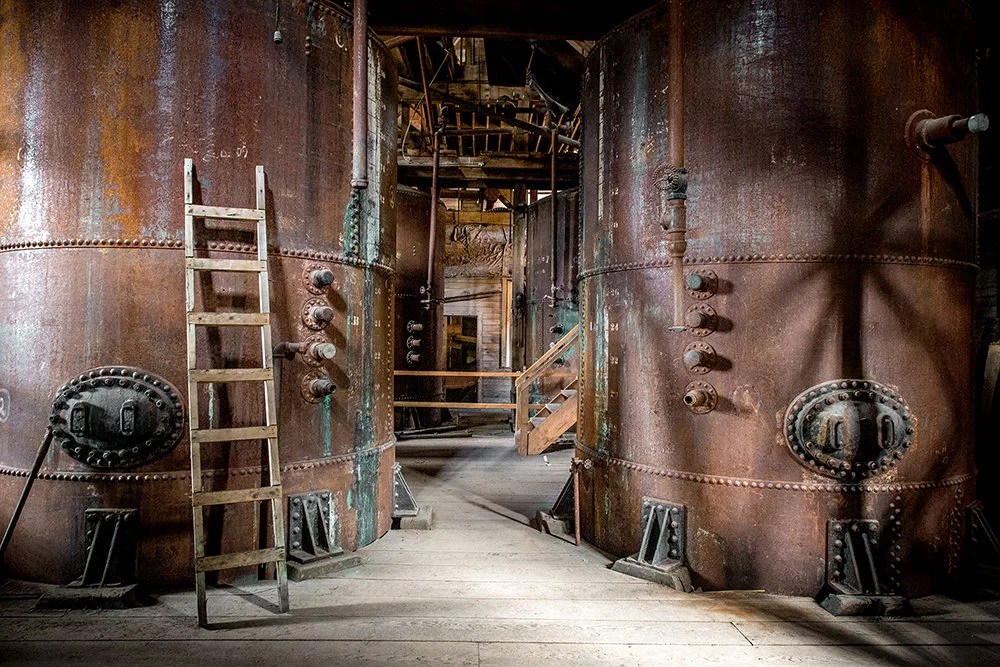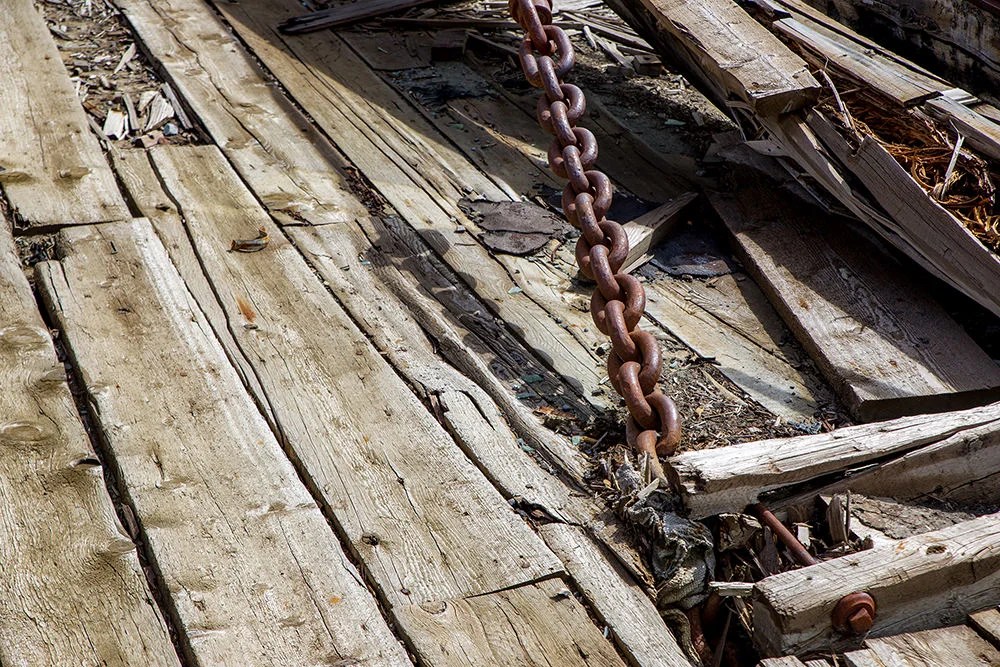We ended up in Kennecott because a lady in Homer mentioned it to us once, she said we’d probably like Kennecott and McCarthy, but didn’t really elaborate too much. We weren’t really sure why we were going there:
- It was quite out-of-the-way
- It was down a dirt road, that as a former railway track had a bit of a reputation for shredding tyres
- A bit of reading informed us that we couldn’t actually drive all the way there and would have to park the car 5 miles away, just outside McCarthy and walk or catch a shuttle
We started the drive towards McCarthy anyway.
While we were on the road, a bit more reading informed us that there was an abandoned copper mine there to explore—Ok, We’re in!
Firstly, yes, it was a bit out-of-the-way, but the drive was as scenic as any other in Alaska, so that was no problem.
Secondly, the dirt road was actually in pretty good condition, so it proved a very pleasant drive.
We spent a night battling savage mosquitoes for a free roadside campsite. After that it was confirmed that we were indeed obliged to leave the car in the car park near the footbridge and trudge our way across in the pouring rain for the first shuttle of the day.
Glad to not be walking the remaining 5 miles in the downpour, we relaxed and enjoyed the trip out to Kennecott.
Stepping out of the shuttle, the nearest bit of cover from the rain was the glacier guide office. Having recently taken ourselves on a self guided tour of the Matanuska Glacier, we opted to skip the glacier and go for a guided tour of the abandoned Kennecott Mill Town buildings.
It transpires that this was a good choice. The guide, as well as being well-informed and entertaining, was also in possession of keys to gain entry into several otherwise inaccessible buildings. Including the main concentration mill building—all 14 crazy storeys of it.
That would be the large building that is clinging precariously to the side of the hill here:
Also, by the time the tour actually got underway, the weather had already cleared. Downpour over. Cameras out, let the exploration begin.
A bit of history
After huge deposits of copper ore were discovered in the Bonanza Ridge above, it seemed that there was money to be made. If only the copper could be brought out from the inaccessible interior to the port of Cordova. It took several years and a lot of work and extreme maintenance efforts (particularly over winter with 14 feet of snow not uncommon) but the railway was built through the swampland and copper extraction could begin in earnest.
The road to McCarthy follows the path of the old railway. For the most part. Some of these older bridges are probably not up to code. The road dips into the valley rather than following the track here. Probably a good thing.
The company town of Kennecott sprung up to house some of the workers and provide a base to sort and process the materials coming down on gondola-style tram carts from the mines in the mountains above.
The first trainload of ore rolled out of Kennecott in 1911. By 1938, the nearby mountains had given up all of their copper ore. During the time of operation 4.625 million tonnes of ore were processed, over $200 million dollars worth. The amount of additional silver extracted as a by-product of the process was enough to fund the cost of establishing the mines and mill town in the first place. So it was a very profitable business.
The buildings of Kennecott are still so intact because it is so far out-of-the-way. It is just not worth the expense to remove many of the items once they have been brought in. However, once the mine was left abandoned, the locals treated it like a bit of a free ‘Home Depot’ (That’s Placemakers for the folk back home) so there are very few windows left in the buildings and plenty of other useful fittings have been removed over the years.
The former mining town is now protected as part of the Wrangell—St Elias National Park and Preserve. Work is being done to restore some buildings and arrest the decay on others. Some have simply been left to be swallowed by nature.

Gaining access to the interior of the mill building was the highlight of the tour. We entered at the top. Here the dismantling of the site had begun. The person employed in to undertake the demolition work had merely made a token effort, while he removed anything of value and then absconded. Fortunately for visitors like us, this meant the disassembly was never completed.

This building clings to the mountainside like some sort of partially complete Jenga game.
Inside the building we wound our way down floor by floor. The interior was a DIYers dream. As new machines and processes were required, the building was adapted to accommodate. Large bits of machinery and windows were left in place between floors as new levels were added around them. Machine belts ran the height of several floors. Turnbuckles were used to hold the building together under the strain of all this thundering machinery and inhospitable weather.
Some of the machinery is still in working order, with bearings and cogs still running smoothly. Even after sixty plus years sitting without maintenance.
In stark contrast to my old iPod.
There were many other buildings to explore in the area, but instead of writing about all of them, perhaps it is best to just share some photos:

























































Trip stats
Number of mosquitoes waiting on door of tent: 60+ (excluding those just hovering)
Number of flat tyres on road to McCarthy: 0
Photos taken: Too many!
Food sampled:
Espresso float: Turns out this is pretty much just an iced coffee. Excellent.
Recommendations to other travellers
St Elias Alpine Guides offer a fantastic tour of the old copper mill town buildings. They have the keys that will get you inside more buildings that you can access on your own and give you plenty of back story about the history and inner workings of the buildings as you explore.
Tailor Made Pizza As usual, we didn’t really plan our day very well and ended up 5 miles from our car with no food. Fortunately there was a conveniently situated pizza place operating out of a bus. The food was delicious and gave us plenty of time to explore the town without having to go back for lunch.
Spend an extra day! We only spent one full day in Kennecott and didn’t really allow any time to spend in McCarthy. Accommodation is expensive in McCarthy and Kennecott, but you could camp on the other side of the river, there may even be somewhere to camp in town if you carry a tent in (tricky to do with a RTT set-up!) The shuttle between the bridge and McCarthy is complimentary—although it is also only a short walk. (The shuttle is $5 if you are going as far as Kennecott). We really should have stayed an extra day so that we could walk to the glacier or up to one of the mine sites, as the area was worthy of more exploration than we put into it.
If you have the money, it sounded like there were some pretty great scenic flight options in the area too…















6 Comments
Great pics!
Thanks 🙂
[…] we were distracted by a side trip to Kennecott but aside from that we were making good […]
Joe & I are loving you blog. Wonderful pictures
Thanks 🙂
[…] we were distracted by a side trip to Kennecott but aside from that we were making good […]